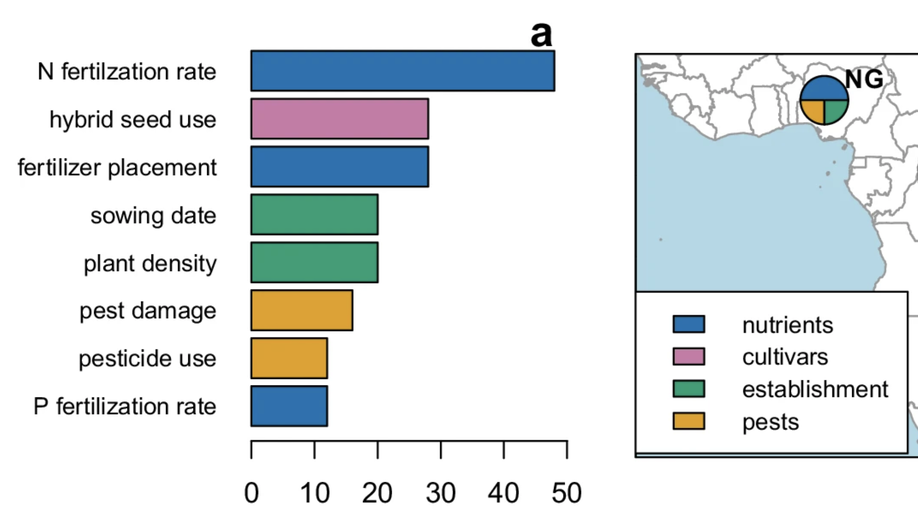
Adopting yield-improving practices to meet maize demand in Sub-Saharan Africa without cropland expansion
We use data collected from 14,773 smallholder fields in Sub-Saharan Africa to identify agronomic practices that can improve farm yield gains.
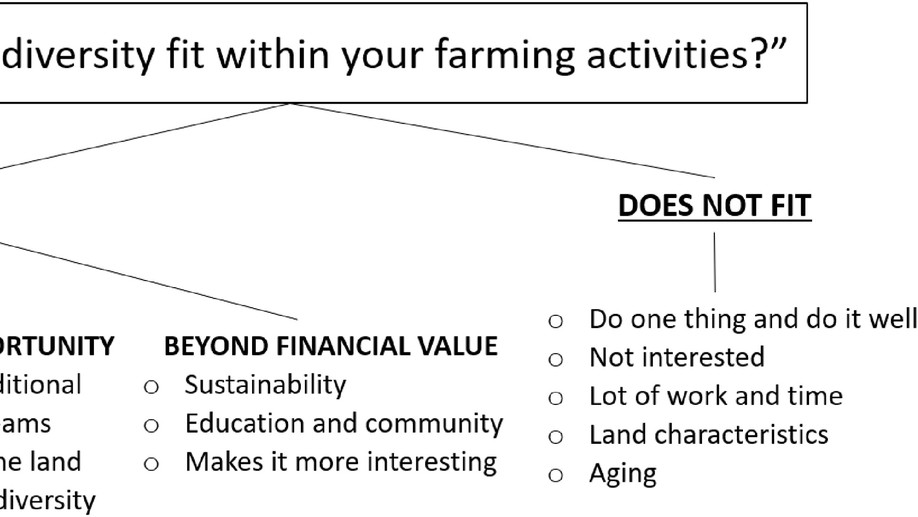
Agricultural diversity, farmers’ definitions and uses: The case of Tasmanian farms
(1) How do farmers define agricultural diversity and diversification? 2) How is diversification ‘used’ as a farming strategy? and 3) What incentives and barriers are currently structuring the adoption of these strategies?

Filling the agronomic data gap through a minimum data collection approach
we developed an approach that identifies sites for agronomic data collection for a given crop and country.
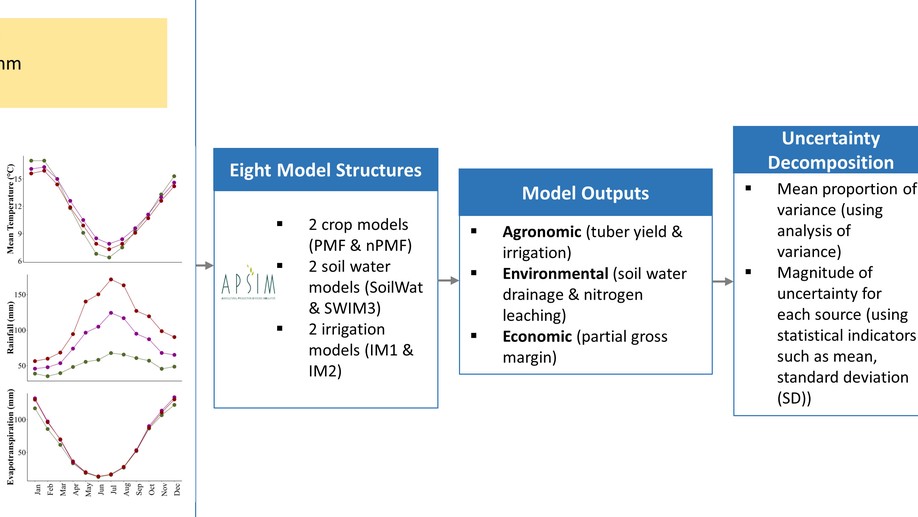
Farm diversification strategies, dietary diversity and farm size: Results from a cross-country sample in South and Southeast Asia
We analyzed farm diversification in Cambodia, India, Lao PDR and Vietnam.
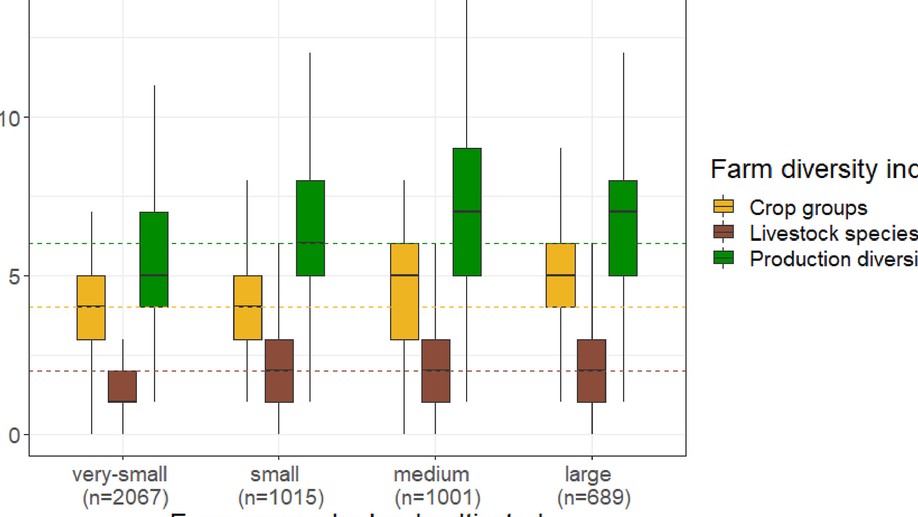
Investigating the effects of APSIM model configuration on model outputs across different environments
We analyzed the effects of model structural uncertainty on model outputs across soil types.
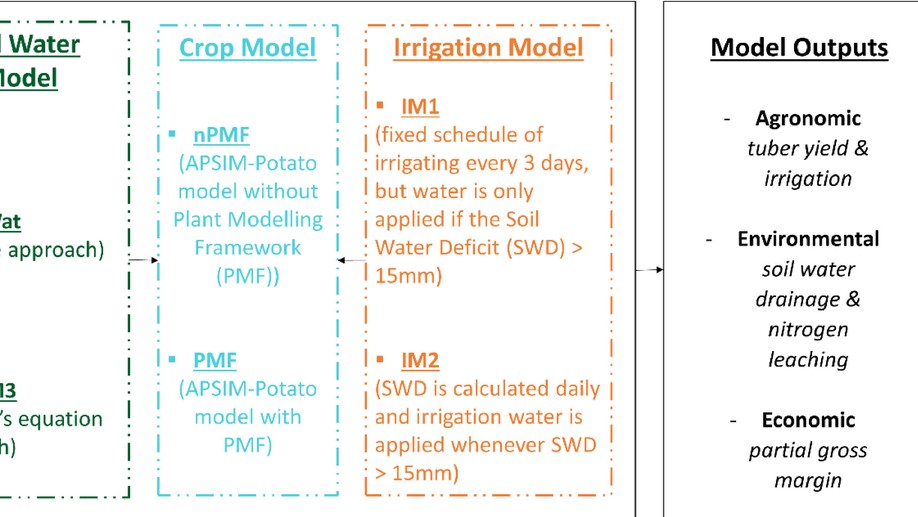
Investigating the effects of APSIM model configuration on model outputs across different environments
We discriminated the sources of model uncertainty vs output variability.
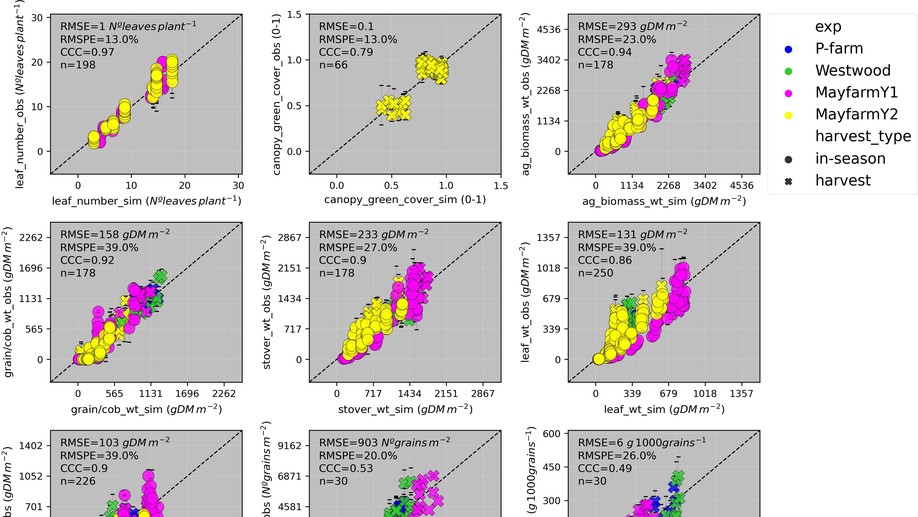
Field and in-silico analysis of harvest index variability in maize silage
Can we predict maize forage quality as a function of harvest index predictions?

Calibrating APSIM for forage sorghum using remote sensing and field data under sub-optimal growth conditions
Can we used remote sensing to calibrate crop models?

Uncertainty in climate change impact studies for irrigated maize cropping systems in southern Spain
Uncertainty decomposition of maize yield in Spain.

Yield gaps of lucerne (Medicago sativa L.) in livestock systems of Argentina
Lucerne Yield Gaps in Argentina.

Quantifying the effects of varietal types × management on the spatial variability of sorghum biomass across US environments
Main drivers of sorghum biomass in the USA.

Drivers and constraints of on-farm diversity. A review.
Drivers and constraints of on‑farm diversity.

Assessing errors during simulation configuration in crop models – A global case study using APSIM-Potato
We assessed the errors during simulation configuration in APSIM-Potato using GxExM experiments worldwide.

Impact of crop management and environment on the spatio-temporal variance of potato yield at regional scale
We determine and quantify the main drivers of potato yield variability under irrigated conditions.

Implications of data aggregation method on crop model outputs – The case of irrigated potato systems in Tasmania, Australia
We evaluated the difference of yield and irrigation using input/output aggregation.

Modelling phenology to probe for trade-offs between frost and heat risk in lentil and faba bean
We model phenological variation with sowing date and cultivar for lentil and faba bean against the climatic patterns of frost and heat.

Effects of soil- and climate data aggregation on simulated potato yield and irrigation water requirement
We quantify the data aggregation effects on potato yield and irrigation requirements.

Modelling inter-annual variation in dry matter yield and precipitation use efficiency of perennial pastures and annual forage crops sequences
We compared two forage landcovers, the sequence oats-maize and pure alfalfa across a mean annual precipitation gradient.

Forage yield, water- and solar radiation-productivities of perennial pastures and annual crops sequences in the south-eastern Pampas of Argentina
We compared resource use efficiency of forage crop sequences and temperate perennial pastures.

Vertical distribution of root biomass and soil carbon stocks in forage cropping systems
We assessed the association between root biomass, C-OM, C in mineral-associated organic matter (C-MAOM), and C in particulate organic matter (C-POM) and its vertical distribution.

Modelling stover and grain yields, and subsurface artificial drainage from long-term corn rotations using APSIM
We assessed the accuracy of APSIM Classic to simulated corn yield and subsurface artificial drainage in north central Indiana US.

Modelling forage yield and water productivity of continuous crop sequences in the Argentinian Pampas
We assessed the accuracy of APSIM Classic to simulated the yield of forage crop sequences in the Argentinian Pampas.

Evaluation of Agricultural Production Systems Simulator as yield predictor of Panicum virgatum and Miscanthus x giganteus in several US environments
We evaluated the ability of APSIM to predict the dry matter yield of switchgrass and Miscanthus at several US locations.

Evaluation of the agricultural production systems simulator simulating Lucerne and annual ryegrass dry matter yield in the Argentine Pampas and south-eastern Australia
We evaluated the capacity of APSIM to simulate the growth rates and predict the dry matter yield of Lucerne (Medicago sativa L.) and annual ryegrass (Lolium multiflorum Lam.) in contrasting climatic regions of Argentina and Australia.
